What is an ESP? Four key things to look for in an email service provider
Published on May 22, 2025/Last edited on November 11, 2025/10 min read
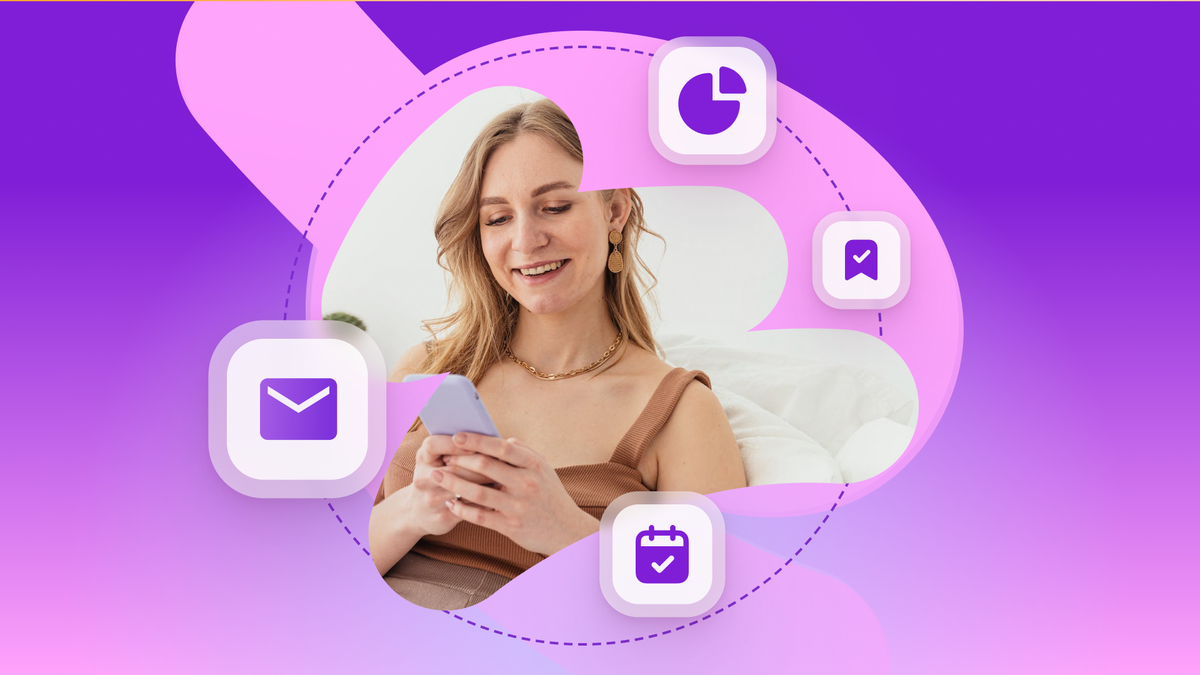

Team Braze
Email is one of the most tried-and-tested channels in digital marketing. For decades, brands have relied on it to drive customer engagement, retention, and revenue–and that’s not changing anytime soon. According to Gartner “email is the most effective channel for several marketing objectives, including demand generation, conversion to sales and customer loyalty and advocacy.”
But getting email right takes more than hitting “send.” Behind every successful campaign is a platform—the email service provider (ESP).
This guide breaks down what an ESP is, how it fits into your marketing stack, and what features actually matter for scale, deliverability and long-term success.
Contents
- What is an ESP?
- What is ESP in email marketing?
- How an ESP fits into your marketing stack
- Four key things to look for in an ESP
- How to choose the right ESP: A quick checklist
- Why Braze is more than just an ESP
- Final thoughts
- Email service provider FAQs
What is an ESP?
An ESP, or email service provider, is a platform that lets businesses send email campaigns to a group of recipients. It handles things like message creation and list management to deliverability and performance tracking.
Basic ESPs manage the mechanics of sending email. More advanced platforms go further, helping marketers personalize content, automate customer journeys, and integrate email into a larger, cross-channel strategy.
What is ESP in email marketing?
When we talk about an ESP in email marketing, we’re talking about the technology or platform that enables businesses to send campaigns to subscribers at scale. It plays a key role in email marketing automation, customer engagement, and campaign reporting.
Most marketers use an ESP to segment audiences, build message templates, and analyze results. Some ESPs also offer more advanced features like A/B testing, automation tools, or behavioral triggers. Brands need to be able to get the right message to the right person at the right time—without manual effort every step of the way.
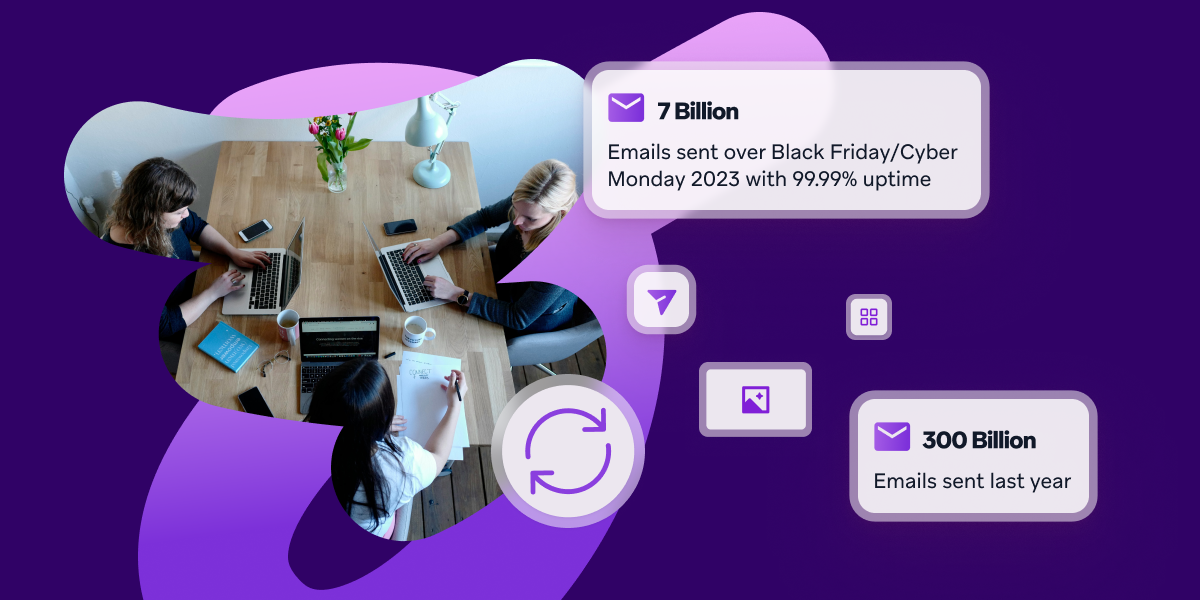
How an ESP fits into your marketing stack
An ESP might start as a standalone tool for sending campaigns, but in a modern marketing stack, it rarely works in isolation. To deliver meaningful customer experiences, it needs to connect with the rest of your ecosystem—data platforms, customer engagement tools, product analytics, and more.
A basic ESP might let you send a monthly newsletter. A more advanced one helps you tap into customer behavior, segment based on behaviors as they change in real time, and trigger journeys that adapt based on each person’s actions.
When integrated well, your ESP becomes the messaging engine at the heart of your customer engagement strategy, powering personalized, data-driven email across the lifecycle.
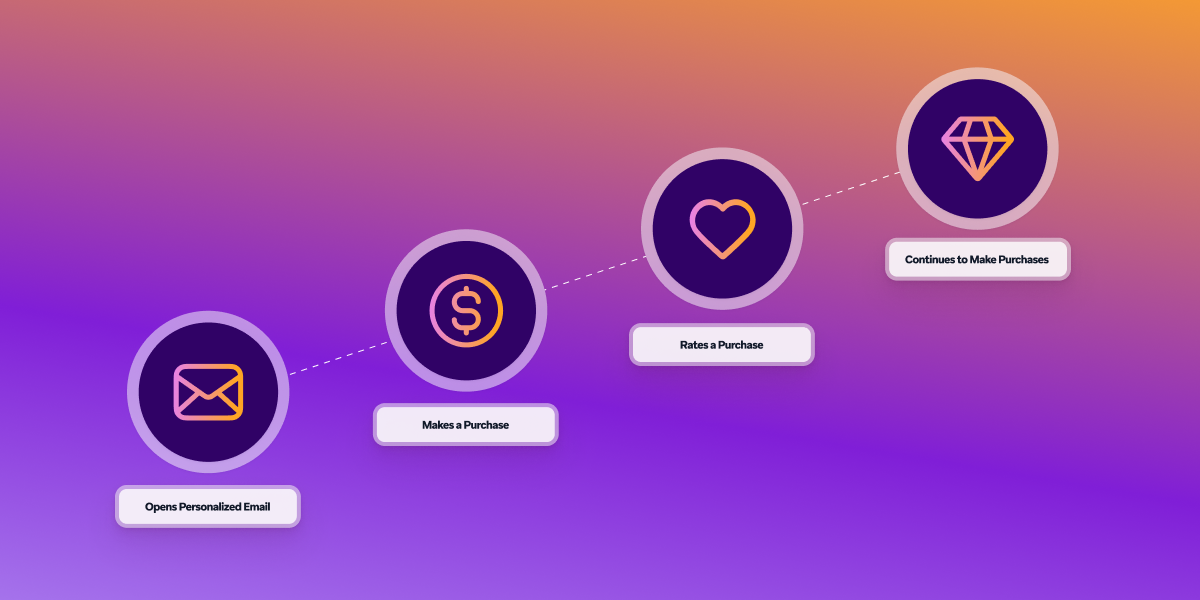
Four key things to look for in an ESP
Once you understand what an ESP is and where it fits in your stack, the next step is knowing how to evaluate one. Not all providers offer the same depth and some are built for small-batch newsletters rather than data-driven customer engagement.
Here are four essential features to look for when choosing an ESP, especially if you want to grow, personalize and engage at scale.
1. Personalization and targeting
Relevance drives results. A strong ESP should help you segment audiences and personalize content based on real-time behavior, preferences and attributes–not just static lists.
Look for features like:
- Dynamic content that changes based on user data
- Behavior-based segmentation and targeting
- Support for personalization at scale
The more your ESP can adapt to user behavior, the more effective your messaging becomes. Braze uses streaming customer data to help brands move from one-size-fits-all emails to truly individualized communications.
2. Automation and cross-channel orchestration
Modern ESPs should do more than send scheduled campaigns. Look for tools that let you automate based on customer actions, time delays, or lifecycle stages and ones that integrate easily across channels.
Key capabilities include:
- Behavioral triggers (like cart abandonment or content viewed)
- Journey orchestration with branching logic and testing
- Native support for email, push, SMS, and in-app messaging
Braze Canvas lets you build, test and refine journeys across channels in one unified interface, so you’re not juggling disconnected tools or trying to guess what’s working.
3. Deliverability support
It doesn’t matter how good your emails are if no one sees them. Your ESP should support high deliverability rates with built-in infrastructure to help you stay out of spam folders.
Look for:
- Authentication support (SPF, DKIM, DMARC)
- IP warming tools and deliverability monitoring
- Feedback loop data and suppression management
4. Scalability and analytics
Your ESP should be built to grow with your brand. That means it needs to handle increasing message volume, data complexity, and campaign sophistication, without slowing your team down.
Look for:
- Infrastructure that supports large-scale sends
- A/B and multivariate testing options
- Real-time analytics and granular performance data
With Braze, brands get visibility into how their campaigns perform across every channel and the tools to optimize quickly–no waiting, no guesswork.
How to choose the right ESP: A quick checklist
There’s no one-size-fits-all ESP. The right platform depends on your goals, your audience and how your team works. But a solid provider should help you send smarter, not just more.
Here’s a quick checklist to help guide your decision:
- Can it personalize content using real-time data and behaviors?
- Does it support cross-channel messaging and customer journey orchestration?
- Are its deliverability tools strong and transparent?
- Can it scale as your team and audience grow?
- Does it integrate cleanly with your existing data and martech stack?
- Are the analytics and testing features easy to access and act on?
- Can non-technical teams use it without relying on engineering?
If you can’t confidently answer yes to most of these, it might be time to upgrade.
Why Braze is more than just an ESP
Most email service providers are built for one thing–sending messages. But when customer expectations are high and attention spans are short, that’s not enough. Brands need platforms that help them act on data, adapt to behavior and deliver the right experience across the right channels at the right time.
Braze is a customer engagement platform that goes beyond the basics of email delivery. It’s designed for marketing teams that want to build stronger relationships through smarter messaging.
Here’s how Braze helps:
Real-time automation
Braze lets you trigger messages based on what customers are doing right now–not hours or days later. With the Braze Intelligence Suite you can automate decision-making from delivery time to multivariate testing.
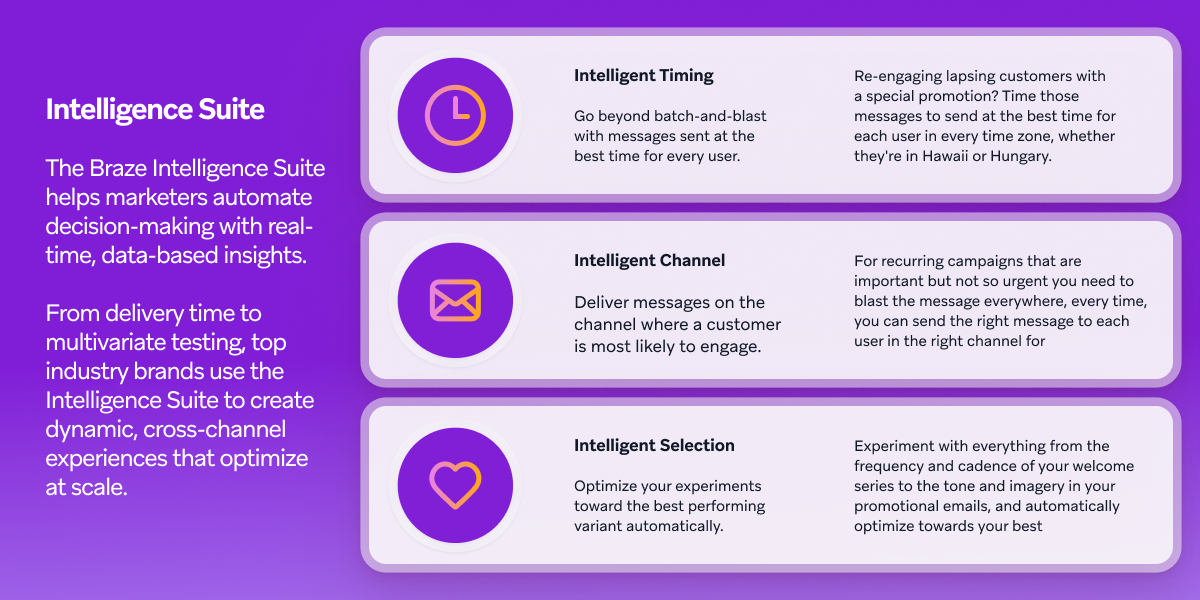
What does this look like in practice? Overstock was able to highlight specific items that customers had recently viewed or saved—and let them know when they dropped in price. By using Braze to send these triggered, segmented, cross-channel messages via push and email, Overstock delivered highly relevant, in the moment outreach that made it more likely that customers returned to their website and app while also seeing email open and unique clicks that were 3X and 9X higher than industry benchmarks.
Flexible personalization
Your ESP should make it easy to personalize the messages that you send (and that the details you pull into your emails are up to date). One great way to make that happen is by allowing marketers to dynamically insert information via API. With access to real-time data, you can build dynamic content that changes based on location, device, purchase history, or behavioral trends.
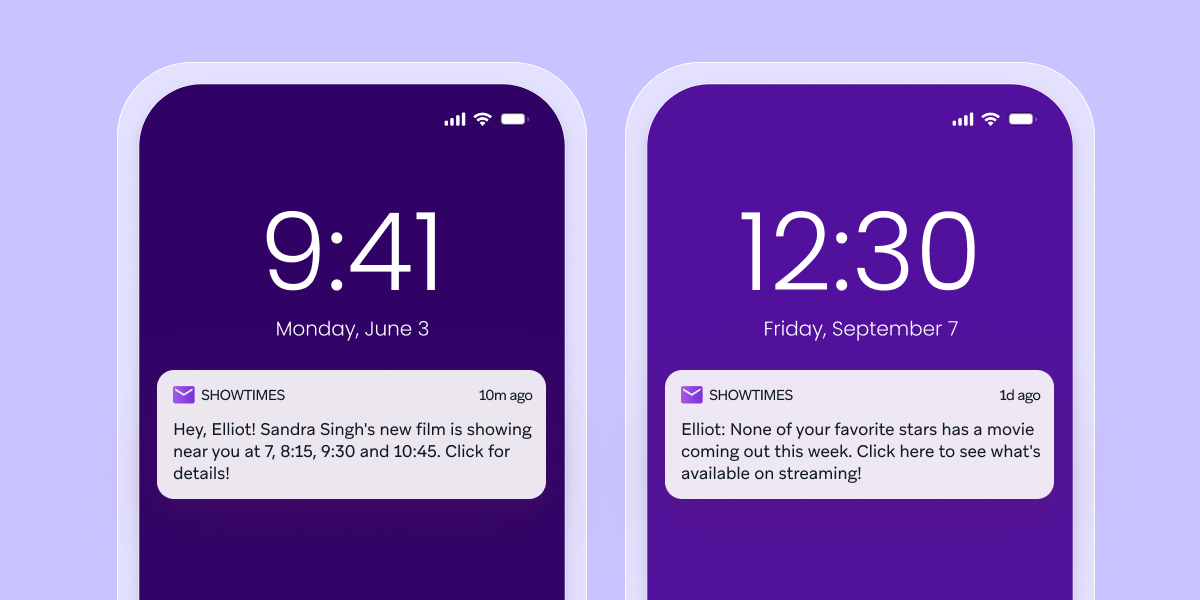
Here’s how it works: Just build a simple email template, then leverage a dynamic content tool (like Braze Connected Content) to pull information from your internal systems or public APIs and insert them directly into the message at send time.
That means you can customize what aspects of each message are personalized—for instance, you could include a photo of the item they just placed in their shopping cart—and to help ensure that the details are timely and relevant. The upshot? While legacy ESPs rely on batched information and creaky databases to inform their personalization efforts, modern API-driven ESPs are built to support effective, time-sensitive personalization every time.
During the COVID-19 crisis, getting relevant information to their users was more important than ever for graphic design platform Canva. To make sure members of the global graphic design community were getting email in the correct language, they used Braze Connected Content to translate their messages and localize them by region—increasing open rates by 33%.
Dynamic segmentation
While many legacy ESPs use static, list-based audiences to help marketers target users, Braze embraces dynamic segmentation. This process leverages the Braze platform’s real-time data to constantly update different groups of users based on whether or not they’ve met certain criteria. For instance, you can use up-to-the-minute data about a user’s app activity to determine if they’re a good audience for your latest email publicizing a new promotion. Without this dynamic updating, you could send an email that’s completely irrelevant.
Showmax, the leading streaming service in Africa, leveraged the Braze platform’s dynamic segmentation capabilities to boost subscribers by 204%, ROI by 37%, retention by 71%, and win-back rate by 12%. The company was able to make it happen by creating tailored cross-channel campaigns (leveraging email, push notifications, and in-app messages) based on each recipient's personal attributes, including lifecycle stage, content preferences, key customer activity, and user characteristics, providing more relevant, more impactful emails and other messages.
Cross-channel journey orchestration
To provide each individual with a journey that speaks to them and helps encourage them to take—and keep taking—key steps, your ESP needs to be able to visualize this larger journey for you and helps you chart it out. Braze Canvas lets you build journeys and coordinate messages across email, push, in-app messages, SMS, and webhooks, all from one interface. You can branch paths based on behavior, test different variations, and adjust journeys without starting from scratch.
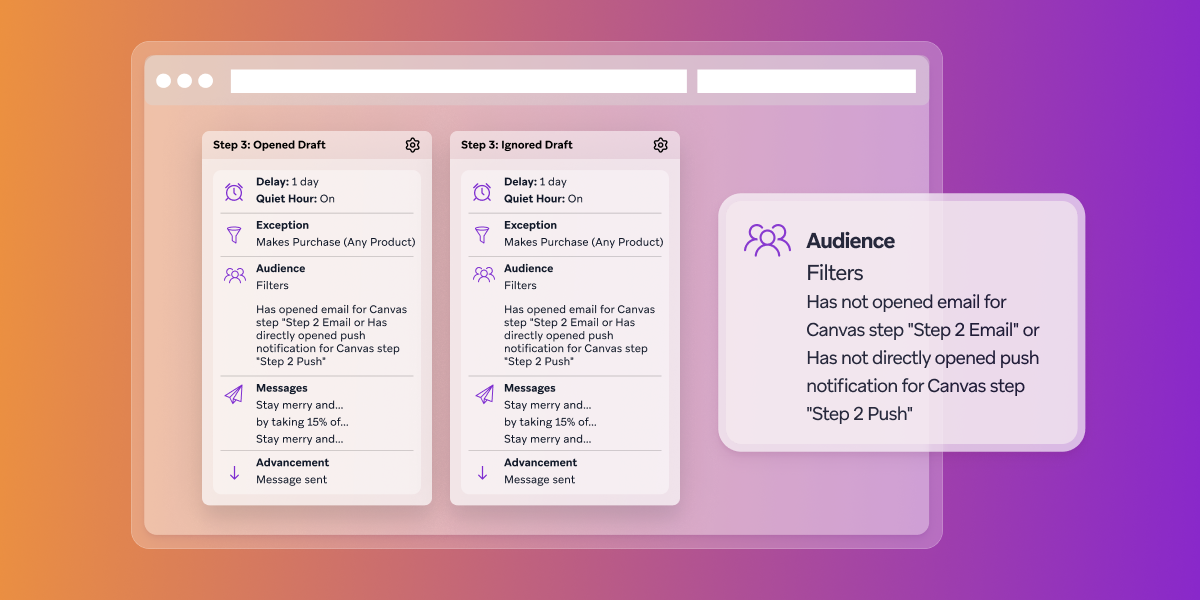
Braze research has found that using the right combination of channels in your campaigns can significantly increase engagement seen from email alone. While sending emails to customers leads to 45% higher engagement (compared to customers who haven’t received any messages), adding in-app messaging to your email campaign can support a more cohesive, end-to-end customer experience and lead to a 315% increase in engagement. If you go even further and add push notifications as well, this three-channel cross-channel engagement strategy can drive a 543% increase in engagement, making your marketing efforts significantly more effective.
Braze is natively cross-channel and channel-agnostic, allowing email marketers to easily bolster the impact of their campaigns by leveraging push notifications, in-app messages, web messages, and other supplemental channels within a single interface. In fact, British gym and fitness brand PureGym was able to use the Braze platform’s cross-channel capabilities to power coordinated campaigns that boosted their email conversion rates by 206%.
Stream processing
Streaming data-based solutions are architected to support the continuous flow of information in ways that make it possible to power live, continuously updated customer profiles that allow marketers to understand each user’s preferences and behaviors in meaningful ways.
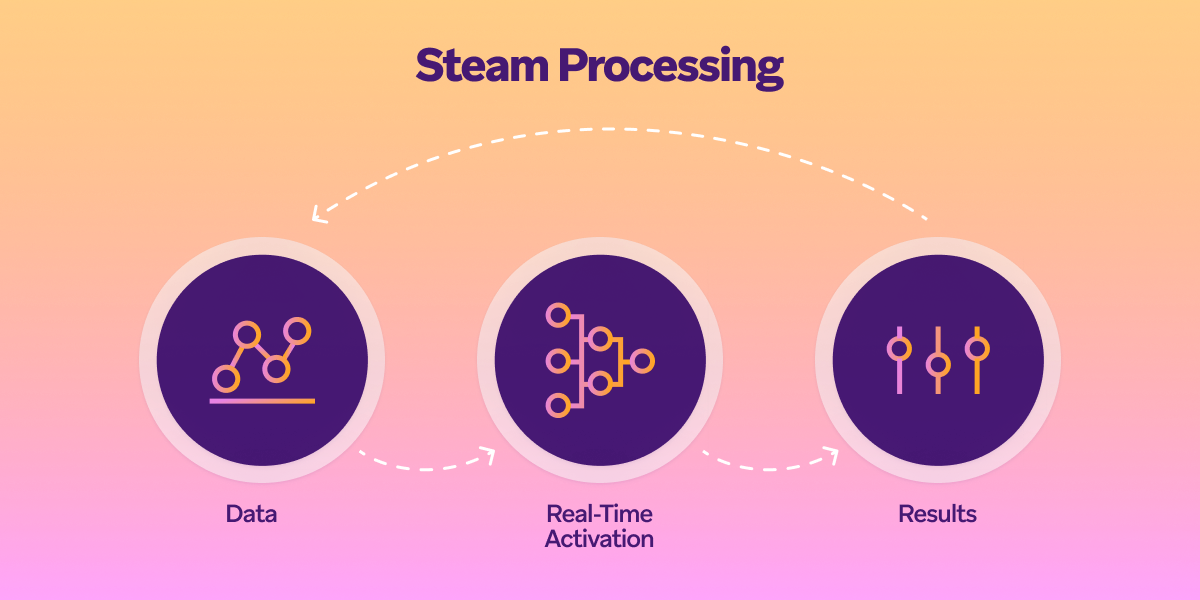
Streaming data also makes it possible for marketers to leverage dynamic segmentation to ensure that users seamlessly move between different audience segments as they take actions, engage with messages, or complete actions, reducing the risk that people will be targeted with irrelevant, broken customer experiences caused by outdated data.
So whether your customer data lives in a CDP, a data warehouse, or your own internal systems, Braze makes it easier to ingest and act on that data in real time. Marketers can launch personalized campaigns faster without needing to rely heavily on engineering.
Built-in experimentation and insights
A/B and multivariate testing are native to Braze, so you can optimize everything from subject lines to message timing. Real-time reporting helps you quickly see what’s working and make confident decisions based on actual engagement.
Braze helps marketing teams create messaging that’s consistent, responsive and built for scale. By combining real-time data, cross-channel coordination and built-in testing tools, it supports the kind of smart, adaptable engagement that keeps pace with your customers.
Final thoughts
Email continues to deliver results, but only when supported by the right tools. If your ESP limits how you use your data, run tests or connect across channels, it might be holding your team back.
The right platform should give you more control, more clarity and more space to build the kind of messaging your customers actually want to receive.
Related Tags
Releated Content
View the Blog
A day in the life of a data scientist on the BrazeAIᵀᴹ forward-deployed engineering team

McKay Jensen

The new inbox reality: How iOS changes are reshaping email marketing

Aparna Prasad

Experience optimization: Turning data insights into better journeys
